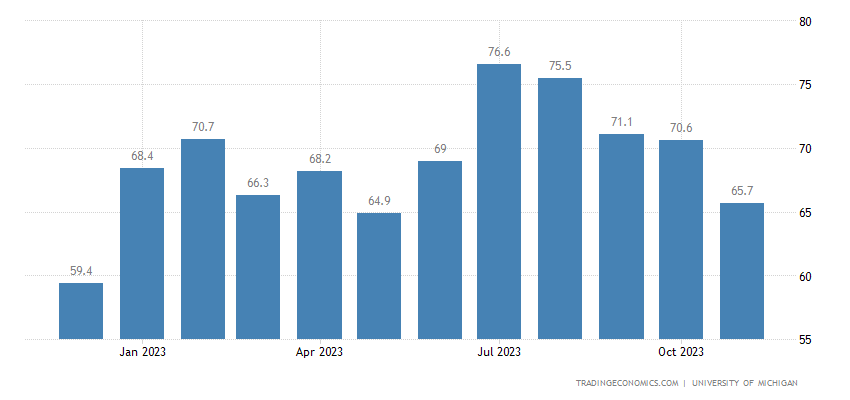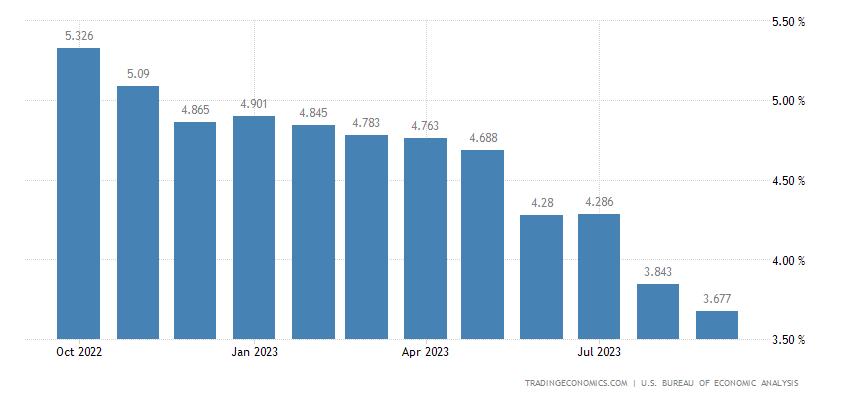Still Lots of Excess Money? US Residents Helps Consumption!
Recently, "soft indicators" such as consumer confidence in the United States have weakened, but "hard indicators" such as actual consumer spending have remained strong.
For example, the University of Michigan's Consumer Confidence Index has declined for four consecutive months since August, and the Conference Board's consumer confidence data has also declined recently, with the overall level lower than before the pandemic. However, on the other hand, consumer data reflecting actual economic activity has performed well, with strong Q3 US PCE and better-than-expected retail sales in September and October.


This divergence is particularly prominent in durable goods, which are sensitive to prices and interest rates. However, the Michigan survey report showed that the percentage of respondents who believed that it was a good time to buy durable goods was much lower than in the third quarter of 2018.
For most consumers, they are more concerned about the absolute level of prices rather than just the growth rate, especially compared to 2019 before the pandemic. Currently, the prices of goods and services are much higher, and most prices have permanently risen, making it easier for them to express dissatisfaction with the rising cost of living during interviews.
At the same time, consumer decisions are mainly determined by employment and income (expectations). Due to the tight job market, steady wage growth, healthy household balance sheets, and wealth effect brought about by rising asset prices, actual consumer spending is supported.
In addition, how much surplus savings American residents have left is also one of the biggest factors affecting the consumption environment. A working paper from the San Francisco Fed in August showed that consumption growth would be significantly suppressed, with the conclusion that excess savings would be exhausted.
However, in their new paper on November 8th, they revised their calculation of excess savings and found that there is still $400 billion in excess savings, which can support consumption until the first half of 2024. This indicates that American residents still have a high level of cash and savings and are not lacking in liquidity.
Cumulative aggregate excess savings
https://www.frbsf.org/our-district/about/sf-fed-blog/data-revisions-and-pandemic-era-excess-savings/
Disclaimer: Investing carries risk. This is not financial advice. The above content should not be regarded as an offer, recommendation, or solicitation on acquiring or disposing of any financial products, any associated discussions, comments, or posts by author or other users should not be considered as such either. It is solely for general information purpose only, which does not consider your own investment objectives, financial situations or needs. TTM assumes no responsibility or warranty for the accuracy and completeness of the information, investors should do their own research and may seek professional advice before investing.

这篇文章不错,转发给大家看看